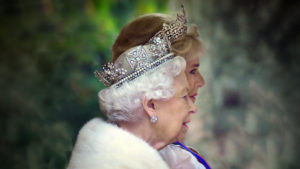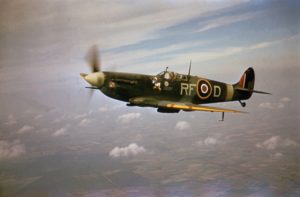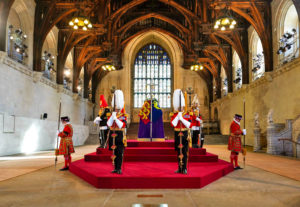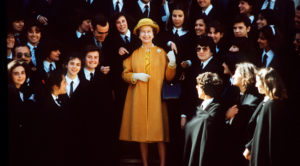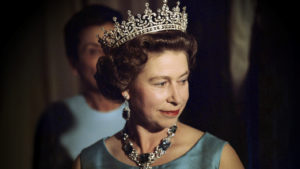A verdigris statue of Queen Victoria, palming an orb, stands watch at the top of Hill Street, Windsor. On the morning of the funeral her hollow metal eyes blankly stare down the road. The sky is a rolling surf grey.
For a millennium there were Royal Sieges, Royal Weddings, and Royal Jubilees at Windsor. But nothing, in living memory, like this Royal Funeral; the Queen — a most revered and respected and beloved Queen — was to be buried within the King George VI memorial chapel. A million-strong crowd was expected. An invading wave of grief vaster than any the authorities had planned for, and more than Windsor could really take. A unique British Hajj.
It was standard for locals to see the Queen in Windsor. This is a Royal borough — the Firm owns 4,500 acres — and the family took its name from the town. In return, the town received the Real Presence of Her Majesty, riding in horses in the park, or wheeling over asphalt in a Land Rover to her chapel. Windsor was charged with glamour by association.
After Elizabeth died, the town whirled into action: the paranoid iron railings, camera cranes and subcontracted stewards, whose hasty assembly marks every major public spectacle in the Kingdom, appeared. This was the heartland of the grieving process.
When the Queen was crowned, in 1953, a third of her subjects believed she was placed on the throne by God. There was no foreign travel, no wine, no Lady Chatterley’s Lover. No real teeth in the mouths of half the adult population. Stalin ruled Russia and virtually the whole of Africa belonged to Europe. The British had just informed the UN that they did not see how it was possible to abolish flogging in their mandated territories, thank you very much.
Yesterday, there were thousands of people everywhere. Then thousands more. Walking from Slough and Staines through the misty morning, along closed roads, past tent cities set up for stewards in the greens around the town. More streamed in for the funeral.
The crowds are candidly patriotic. Monarchy is something they feel in their bodies. It is a powerful internal force, not a theory, not an idea. It’s an obvious decision: take the pram, and the dogs, to Windsor. They say the Queen was theirs. They say the same things, over and over: we expected her to go on forever; we knew her all our lives; we wanted to pay our respects. Trails of flowers are left, under trees, under the hard glare of the castle walls.
I’m reminded of Walter Bagehot, Monarchy’s most supercilious theorist. For the Kingdom, he said, the monarch was simply “a visible symbol of unity to those so imperfectly educated as to need a symbol”. The portraits of Queen Elizabeth, hung in every shop window across the town — including the Thai Massage parlour — are pure symbolism. She looks as exact and fictitious as the lines on a map. People are not always sure what to do when a symbol dies. I’m told they almost ran out of champagne in The Ivy Windsor on September 8. Hallowed British etiquette: if in doubt, drink.
Otherwise, a child walks up to one Elizabeth in an estate agent’s window, stops, pulls a handful of conkers from her pocket, and lays them there in a small line below the image. An offering. Walking around Windsor, Bagehot would have thought himself vindicated.
Yet he was too cynical. Being a fantasy does not make this unreal.When you speak to enough mourners, you realise Elizabeth was more than symbol. She was not abstract to Lee, a huge bull-thick slab of a man who is in charge of the catering in the Great Park. He cooked for the Queen twice when he was a chef in the Army. “She sat in the mess with 400 blokes, like anybody would.” The recollection cuts him somehow. “She remembered my name, three years after the first time we met.”
Or David, a garrulous ex-guardsman, who is on his third wreath-laying trip to Windsor this week. Tourists are making him pose outside the castle gates with a corgi. He served in the household division. The Queen was as regular as post in his life for 18 months. What was she like? The memory enters his face and complicates his bonhomie. “She was… strict.” He always feared she would have him locked in a cell if he slouched on the parade ground.
Elizabeth was the people’s to make of her what they will. I begin to lose count of the number of mourners who compare her with their mothers, or grandmothers. “It’s like losing her all over again”, says one woman.
The mourning is not exclusively for the Queen then. It’s for them, and their families. They relate the Queen’s pain to their own; somehow this is the same pain their grandmothers felt. They saw them ground down by life and imagine that was the Queen’s fate too. All these grandmothers, never-ending in our heads, amen.
A thick human hedgerow grows in two parallel lines up and down the Long Walk. We watch the funeral on jumbo screens. The silence here can straighten shoulders. When we sing God Save the King, the words feel curious in our mouths. Someone stumbles off to cry behind a portaloo.
Grace tugs the edge of her Union Jack shawl. She came to Britain from Ghana in 1985. “I am the Commonwealth”, she says. A producer from ITV keeps calling her, begging her to come to London to be interviewed. But Grace wants to be in Windsor. She turns her phone off.
“We have a saying in my country: when the frog dies you will know the length of the frog.” I ask her what sort of frog Elizabeth was. “A very good frog”, says Grace. “The best frog.”
She tells me to wait under a tree, and returns with a cardboard cut-out, clearly well-used, of the Queen. “The moon and the stars will follow her,” Grace intones, posing for photos with machine-gun-bearing police officers.
After midday, we stand at the top of the Long Walk, waiting for the procession. There is static in the air. People say things out of nowhere. “Arlo, please stop, or I shall strap you in the pram.” Somebody says she will freeze her Bramley apples. “Once she’s in there, that’s it, it’s over — it’s over there, you can see the chapel.” Another, thinking ahead, wonders how long it will take to get back to Paddington.
A row of notables, in a dream of hierarchy, stands on the opposite side of the walk. They are wearing furs, white gloves, and spotless ruffs. On our side, there are no pearls, only Sandra handing rice crackers to perfect strangers. The first thing she did when the Queen died was post a poem on Facebook. They shall not grow old, as we that are left grow old… “Me and Paul watched it all on the telly, everything”, she says. “There was so much we never knew.” She talks about the Queen like a song she can’t remember the words to. The telly told her to come to Windsor, so now she is forcing a rice cracker into my hands.
All of us shaped by television and language and the jokes we share, have never had so much in common: we are waiting on this smooth baize runway, in the sun, to watch her go home. And we are sharing the same frustrations in this crowd, which is ten heads deep. The same elbows in our faces, the same children crying and rustling; the irritations and bathos and peevishness, all the subterranean currents that flow beneath the splendour. Time feels like it’s buffering. Sandra sighs. There will be no more rice cakes.
It begins with a soldierly bellow. Then, hush. Then the squashed pom-pom thud of cannon half a mile away. They scatter rooks from the elm-trees, who corkscrew overhead. People tell each other to look.
Look: the procession glints in the far distance. It moves into clarity. Cavalry in outline, a haze of red wool, eerie piping. Everybody is filming the slow, square marchers. Everybody wraps chains around these minutes, to keep them alive, to keep her with them.
They are filming the old style, the British high idiom, bury the Queen. Pageantry separate in kind and scale to any they have seen before, or will ever see again. A precious echo of the country this used to be. All this power kept in reserve for today. There are flashing swords, gorgeous armour, and blazing uniforms, but gentleness is the overwhelming impression. Militarism to send off a Grandmother, not to project power. Grief, not anger. We are its witnesses.
When the crown is level with my face there is so much brass in the air you can taste the metal. People close their eyes to stretch the crowded seconds out. The music rings flawlessly in a dozen directions. Skin and bone absorb the moment. A key is turned. History has been released from reality.
The car wheezes forward for the last time, followed by four billion eyes, through the gates of Windsor Castle. The Queen is swept along and swept up into the cheerful English heaven she believed in. She takes her final seat in the stands, with Charles I and George III, Henry VIII and Victoria, and all the others, even poor King John.
As dusk fell, we sloped back down the Long Walk, and the thumping drums faded away. Screens showed the Queen alive, accepting some carnations from school children. Elizabeth had no grand idea. No message of hope and change. No calls to arms. Her life was blockaded by duty. She seemed to ask nothing of us but to do ours too.
Disclaimer
Some of the posts we share are controversial and we do not necessarily agree with them in the whole extend. Sometimes we agree with the content or part of it but we do not agree with the narration or language. Nevertheless we find them somehow interesting, valuable and/or informative or we share them, because we strongly believe in freedom of speech, free press and journalism. We strongly encourage you to have a critical approach to all the content, do your own research and analysis to build your own opinion.
We would be glad to have your feedback.
Source: UnHerd Read the original article here: https://unherd.com/

